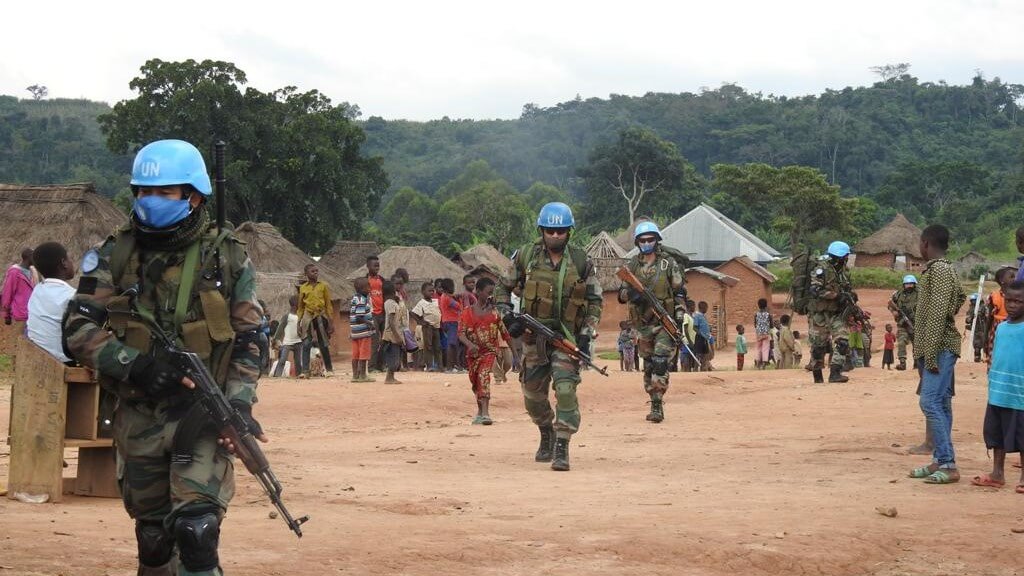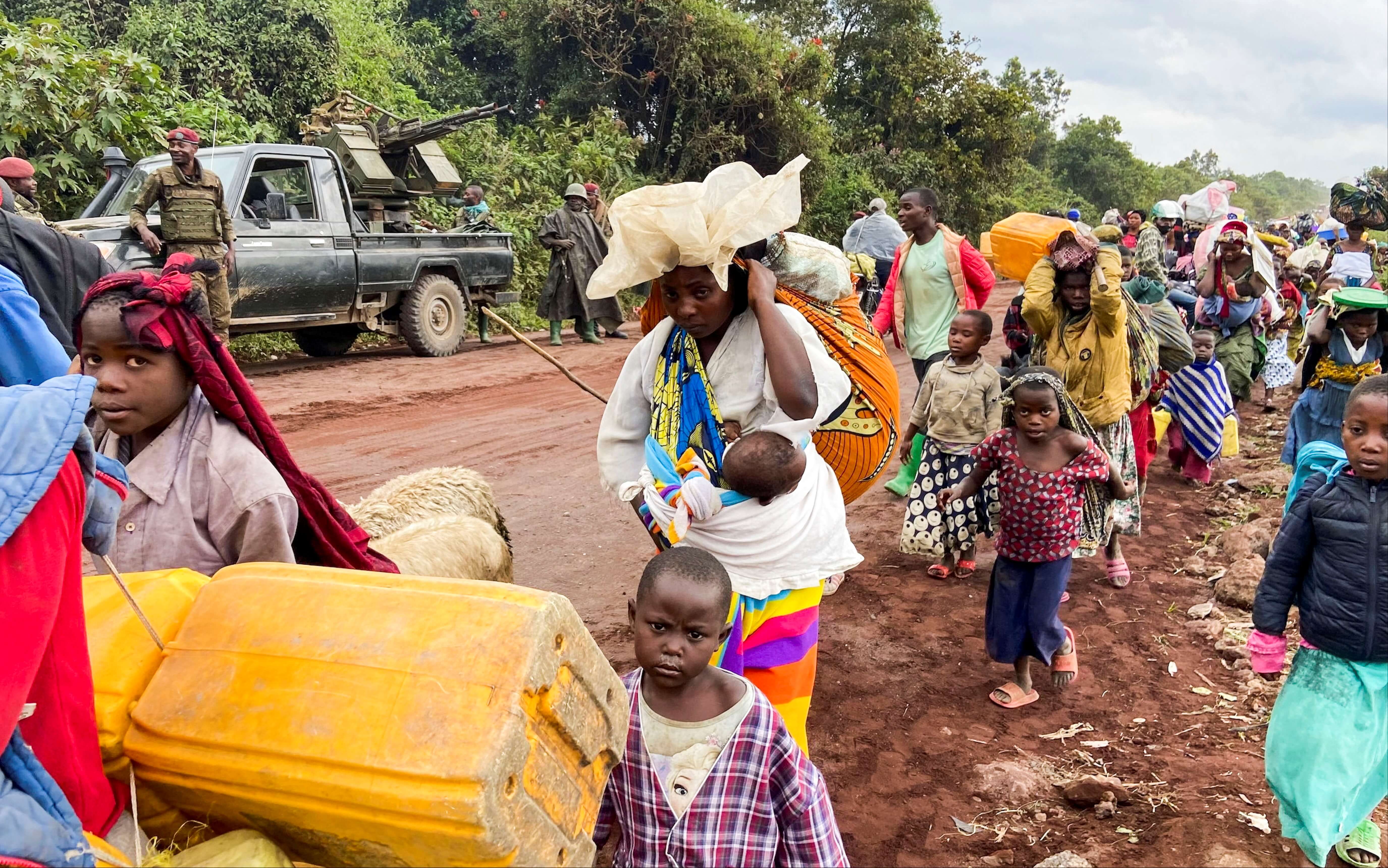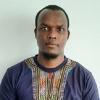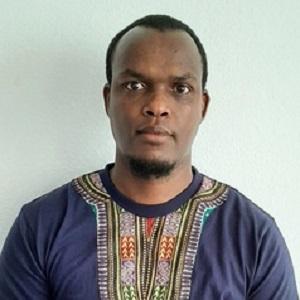Anti-Tutsi hate speech refuels conflict in eastern DR Congo
Armed hostilities in the eastern Democratic Republic of the Congo (DRC) and the deteriorating relations with Rwanda increasingly threaten regional security. Key drivers of the recent waves of violence are hate messages and conspiracy theories on social media targeting the Tutsi population of the DRC. Ever since the 1994 genocide that targeted the Tutsi in Rwanda, hate speech has been a pervasive phenomenon jeopardising peacebuilding interventions in the DRC and the region.
THE ISSUE
What is this about?
Anti-Tutsi hate messages and conspiracy theories are regularly shared on Congolese social media platforms during times of crisis between the Democratic Republic of the Congo (DRC) and Rwanda.
Is hate speech in the region a new phenomenon?
Hate speech has been a pervasive phenomenon in the African Great Lakes region over the last three decades and a key factor in the genocide in Rwanda, but the social media revolution has contributed to the amplification of the phenomenon.
What are the consequences?
Failure to design enforceable legislation, policies, and comprehensive peace education and messaging strategy to address hate speech and conspiracy theories in the DRC is likely to continuously jeopardise other peacebuilding interventions in the DRC.
Since November 2021, the Democratic Republic of the Congo (DRC) has seen a military escalation between the armed March 23 Movement (M23) and the Congolese army supported by United Nations peacekeepers in the North Kivu province in Congo. Established in 2012,1 the M23 claims to fight for a more inclusive society that offers security guarantees for all, particularly for Kinyarwanda-speaking populations who have faced discrimination for decades and for a safe return of Congolese refugees in neighbouring countries.2
The fighting between the M23 rebellion and the Congolese armed forces (FARDC), resulting in a deterioration of the security situation in North Kivu, has caused mass displacement and suffering to a civilian population continuously victimised by decades of never-ending conflicts. Within this context of the resumption of armed hostilities, populist demonstrations have been held across the DRC denouncing external aggression by Rwanda as the Congolese government accuses Rwanda of actively supporting the M23 rebellion; an accusation that the Rwandan government denies.3 The protestors also demand the departure of the UN peacekeeping force in the country – the United Nations Organization Stabilization Mission in the Democratic Republic of the Congo (MONUSCO) – for failing to stop the cycle of violence.
During these demonstrations, individuals identified as Rwandans or specifically Tutsi have been killed by the mob, suspected of being “natural” allies of the M23. Some individuals were even cannibalised; filmed scenes demonstrate some of the most horrific images the world has seen in recent memory. Homes, businesses and other property belonging to, or used by, persons identified as Rwandans or simply Tutsi have been attacked, vandalised or looted.4
The crisis between the DRC and Rwanda threatens to escalate, which may result in yet another regional war unless proper diplomatic and security interventions are undertaken to avert a new armed conflict in the region.5
A deep unresolved crisis
Far from a new crisis, the recent armed hostilities between the M23 and the Congolese army as well as the deterioration of relations between the DRC and Rwanda are reflections of the deep unresolved security, political, social and economic crises that have plagued eastern DRC for decades. The recorded presence of more than a hundred, mostly domestic but also Rwandan, Burundian and Ugandan armed rebel groups, as well as the execution of multiple overt or covert operations by regular armies from these three countries in the North Kivu, South Kivu and Ituri provinces partially explain the complexity of the situation.
While a multiplicity of factors explain the cycle of conflicts and violence, key drivers of the armed mobilisation and violence are hate speech and conspiracy theories
While a multiplicity of factors explain the cycle of conflicts and violence, key drivers of the armed mobilisation and violence are hate speech and conspiracy theories targeting the Banyamulenge and Banyarwanda populations of the DRC, including a popular rejection of their equal citizenship rights. The Banyamulenge of South Kivu are mainly Tutsi while the Banyarwanda of North Kivu comprise Hutu and Tutsi communities. Both populations have historical and cultural ties with Rwanda but also with other countries of the region. These communities settled in eastern DRC prior to the establishment of the country’s boundaries but their citizenship and authentic belonging to the Congolese state (using the language of autochthony) have constantly been questioned by successive Congolese administrations, resulting in patterns of socio-political exclusion.

Hate speech: a pervasive phenomenon for decades
Social media spaces covering events around the African Great Lakes region have been inundated with hate speech and belligerent rhetoric in relation to the resumption of fighting between the M23 and the Congolese armed forces in recent weeks. Hate speech has been a pervasive phenomenon in the socio-political discourse in the African Great Lakes region over the last three decades and beyond. In Rwanda, Burundi and the DRC, hate speech and conspiracy theories have often been activated in times of conflict by actors seeking to demonise opponents, turning them into legitimate targets of henceforth legitimised violence.
The phenomenon of hate speech played a key role in conflicts and violence in Burundi and the DRC from the early 1990s. It took the most extreme and well-known manifestation in the Rwandan context in the period before and during the 1994 genocide that targeted Rwanda’s Tutsi population, as well as the Hutu opposed to the genocidal enterprise.

From 1993, broadcasts by the extremist Radio Télévision Libre des Mille Collines (RTLM) and printed outlets, most infamously the Kangura Magazine, carried hateful messages intended to dehumanise the Tutsi or inciteful rhetoric calling for violence against them. Kangura Magazine’s issue of December 1990 codified the ten Hutu commandments on the evilness of the Tutsi, while the cover story two years later (for issue 26) carried the caption: “Tutsi, Race of God: Which weapons shall we use to defeat the cockroaches once and for all?”6
The question was simply rhetorical since an accompanying representation of a machete was intended as a fitting answer. Similarly, from 1993, extremist rhetoric and inciteful broadcasts by the RTLM were intended to shape minds about the nature of the ongoing civil war, the enemy and what needed to be done to triumph.
During the Second Congo War from 1998 to 2002, anti-Tutsi rhetoric – used by figures such as Minister of Foreign Affairs Abdoulaye Yerodiya Ndombasi and even former President Laurent-Desiree Kabila – fuelled summary executions and lynching of individuals identified as Tutsi. They were accused of being natural allies of the Rwanda and Uganda-backed rebellions.
Social media amplified hate speech
The social media revolution has contributed to the amplification of hate speech. In a study I published with Aggée Shyaka Mugabe in May 2022 in the Journal of Genocide Research, we found that anti-Banyamulenge and anti-Tutsi hate messages and conspiracy theories are regularly shared on Congolese social media platforms such as WhatsApp and Facebook.7
Additionally, these messages are posted on interactive websites and streamed on an ever-increasing number of YouTube channels by an increasingly connected network of actors. These actors include populist local and national politicians, leaders and supporters of armed groups, public figures from civil society, extremist members of neighbouring ethnic communities, and – most vociferously – members of the Congolese diaspora in Europe, North America and (Southern) Africa.
Hate messages and conspiracy theories play a significant role in mobilising support for the different armed groups operating in the eastern Kivu provinces of the DRC. Local administration in the country, particularly in rural areas, still reflects the Belgian colonial governance legacy manifested in the creation of ethnic territories whose continued existence raises issues of authentic belonging, inclusion and exclusion. As a consequence, the commodification of ethnic identity and belonging represents a fertile ground for political and armed mobilisation using hate speech intended to vilify and exclude the ‘other’.

Inspired by colonial anthropology, the core unifying ideology for several dozens of Mai-Mai armed groups operating in South Kivu centres on the idea that the Banyamulenge of South Kivu and the Banyarwanda of North Kivu, particularly the Tutsi community, are alien ‘Nilotic’ groups, different from the autochthonous ‘Bantu’.8 The rebel groups maintain that for the DRC to regain peace, these communities should be forcibly sent to Rwanda where they ‘naturally’ belong.
This creed was already clearly articulated back in 1995, as documented by the United Nations9 , and constituted one of the mobilising factors for the First Congo War that toppled President Mobutu Sese Seko in 1996. Widely shared conspiracy theories undergirding hate speech in the Congolese context maintain that the DRC is under foreign occupation since the 1996 war. The successive Congolese administrations since then – from Laurent-Desirée Kabila to his successor-son and the current President Felix Tshisekedi – are portrayed as mere puppets of the “Rwandan and Ugandan occupiers” and, depending on variants in these narratives, their Western allies.10
In a local rendition of the great replacement theory, countless audio, video and text messages present the Congolese Banyamulenge and Banyarwanda as a fifth column serving Rwandan President Kagame’s and Ugandan President Museveni’s purported hegemonic ambitions to create a Hima-Tutsi empire in the Great Lakes region through the replacement or subjugation of ‘native’ populations and infiltration of Congolese governing and security bodies. According to these conspiracy theories, the ultimate aim of this plan is to balkanise (meaning to fragment) the DRC.
Multiple YouTube channels and countless other messages shared on social media openly advocate violence, even genocide
Dehumanising tropes popularised by Rwanda’s hate media (RTLM and Kangura Magazine) before and during the genocide against the country’s Tutsi are regularly reproduced on social media against the Banyamulenge, the Banyarwanda or the Tutsi in general. Members of these communities are frequently portrayed as snakes, vipers, cockroaches, vermin, chameleons, invaders, greedy, killers, bloodthirsty criminals, deceptive manipulators, usurpers, hegemonists and expansionists.
Once stripped of their humanity, multiple YouTube channels and countless other messages shared on social media openly advocate violence, even genocide, against them. Several leaders of armed groups, active politicians, community leaders and diasporic activists are on record stating their ultimate goal is to cleanse the Banyamulenge and Banyarwanda from the DRC – either by forcibly expelling or killing them. This is presented as a mere act of resistance and self-defence. Platforms such as YouTube carry fundraising messages for support to armed groups pursuing this cause.
My earlier mentioned study on anti-Banyamulenge and anti-Tutsi hate speech was conducted and published just days before the explosion of hateful rhetoric and violence in such places as Goma, Bukavu, Kinshasa and Kalima by the end of May and early June 2022. Yet, data, confirmed by these later events, revealed increasingly scripted narratives on the sources of the DRC’s conflicts, with calls for, or predictions of, popular mobilisation against “Banyarwanda occupiers” in the DRC.
The rhetoric used in the multiple recent videos and audio messages that made rounds in traditional and on social media in recent days was therefore nothing new nor a simple spontaneous reaction to attacks by the M23. The seeds for such explosions have been visibly present in the violent conflict in the hauts plateaux area of South Kivu over the last five years, albeit with fewer cameras, or limited geopolitical interest, in what was happening.
Indifference from international decisionmakers
Conflict and violence in the DRC have generally been met with relative indifference from international decision makers and the general public. This indifference has been reflected by decades of routine interventions ̶ in the form of peacekeeping, peacebuilding and development cooperation ̶ that have fallen short of addressing the deep-rooted causes of the conflicts and violence. Comparisons with global attention to, interest and interventions in, the ongoing conflict in Ukraine illustrate this relative indifference.
Failure to implement a peacebuilding strategy that addresses local, national and regional dimensions of the conflicts – in such areas as inclusive governance and citizenship, equal access to land, power and resources as well as disarmament of local and foreign armed groups – has been a constant factor for the episodic resurgence of conflict and violence that continuously victimises the civilian population.
Global action to curb hate speech on social media currently faces even more serious challenges than in the 1990s landscape
The absence of coordinated, coherent action in addressing the toxic phenomenon of hate speech fits in this pattern. In his memoir Shake Hands with the Devil: The Failure of Humanity in Rwanda, the commanding officer of the United Nations Assistance Mission for Rwanda (UNAMIR) Romeo Dallaire recounts his heated arguments with authorities in New York about the need to shut down the RTLM station that functioned as a “direct instrument in promoting genocide”.11
Dallaire faulted the United States and the United Kingdom for failing to stop the broadcasts through jamming, a direct air strike on the transmitter or covert operations. Admittedly, global action to curb hate speech on social media currently faces even more serious challenges than in the 1990s landscape.
However, a close study on how Congolese social media operate – linking actors in the country and diaspora – shows that measures aimed at moderating social media content taken in other contexts, such as removing hateful materials, flagging unsubstantiated claims and other forms of of filtering the content, are not replicated either by government or social media service providers. Given the large circulation and endorsement of hateful and conspiratorial narratives in the DRC, some foreign actors – including the UN, NGOs, IGOs, development cooperation partners and even researchers involved in the country – chose to avoid this hot topic to prevent potential backlash or burning bridges. The large diffusion and endorsement of populist narratives, conspiracy theories and hateful discourses is accompanied by ‘either-with-us-or-against-us’ attitudes that push certain actors into self-censorship.
Failure to take appropriate measures, (...) is likely to continuously jeopardise other peacebuilding interventions in the country
International and some Congolese actors widely condemned recent graphic images of direct incitement, demonstrations and lynching targeting individuals identified as Tutsi or Rwandans, and in some cases, suspects have been arrested by Congolese authorities. However, the latter have failed to pass appropriate legislation or take decisive action to address the phenomenon in a systematic manner.
Similarly, foreign countries such as Belgium, France, South Africa, the UK, the US and Canada harbour Congolese actors involved in the dissemination of hate speech and have failed to curb the harmful role they play on the terrains of hostility in the Kivu provinces and elsewhere in the DRC. Failure to take appropriate measures, including adopting enforceable legislation, policies and comprehensive peace education and messaging strategy to address hate speech and conspiracy theories in the DRC is likely to continuously jeopardise other peacebuilding interventions in the country. In addition to other political and military strategies intended to enforce peace in eastern DRC, a comprehensive anti-hate speech and peaceful coexistence strategy should feature among the top priorities.
- 1Mainly by former members of the politico-military movement National Congress for the Defence of People (CNDP) in the North Kivu province.
- 2Furaha Umutoni Alida, ‘Where do we belong?’ Identity and autochthony discourse among Rwandophones Congolese, African Identities, 15:1, 2017, p. 41-61; Sadiki Koko, ‘The Mouvement du 23 Mars and the dynamics of a failed insurgency in the Democratic Republic of Congo’, South African Journal of International Affairs 21:2, 2014, p. 261-278.
- 3Rwanda’s authorities deny this, countering with accusations about an operational alliance between the Congolese army and Rwandan rebels of the Democratic Forces for the Liberation of Rwanda (FDRL) and about the shelling of the Rwandan territory by the FARDC and allies.
- 4Theo Englebert, ‘Lynchage au Congo: «Voici le Tutsi, prenez-le!»’, Libération, 14 July 2022.
- 5On 20 June 2022, the Heads of State of the East African Community, under the leadership of Kenyan President Uhuru Kenyatta, announced the deployment of a regional force in the area to enforce peace, but the initiative has so far raised more questions than answers. It is unclear who will take part and what will be done differently this time to change the situation on the ground in a region that hosts one of the world’s largest peacekeeping force for over two decades.
- 6‘Kangura No 26’, November 1991.
- 7Felix Mukwiza Ndahinda and Aggée Shyaka Mugabe, ‘Streaming Hate: Exploring the Harm of Anti-Banyamulenge and Anti-Tutsi Hate Speech on Congolese Social Media’, Journal of Genocide Research, 19 May 2022.
- 8There are over 100 different armed groups operating in North and South Kivu. Several groups carry the name Mai Mai, rooted in superstitious beliefs in the use of “magic waters” conferring invincibility. On these groups, see: Kivu Security Tracker, ‘The Landscape of Armed Groups in Eastern Congo: Missed Opportunities, Protracted Insecurity and Self-Fulfilling Prophecies’, 28 February 2021.
- 9In its report coded E/CN.4 /1997/6.
- 10Jean-Pierre Mbelu, ‘L’occupation des terres congolaises fut planifiée. Il faut planifier le “demain, après Kabila!”’, Ingeta, 5:21, 2018, p. 2, 3; John Kapapi, Lies of the Tutsi in Eastern Congo/Zaire, Bloomington, IN: Xlibris, 2019.
- 11Romeo Dallaire, Shake Hands with the Devil: The Failure of Humanity in Rwanda, Boston, MA: Da Capo Press, 2003, p. 375.





1 Reacties
Load comments
Réaction to this wonderful Statement
It is with much appreciation that I came out reading this sad situation that Congolese Tutsi communities are going through. Unfortunately no one is aware and reacting on this dangerous situation.
Reactie toevoegen